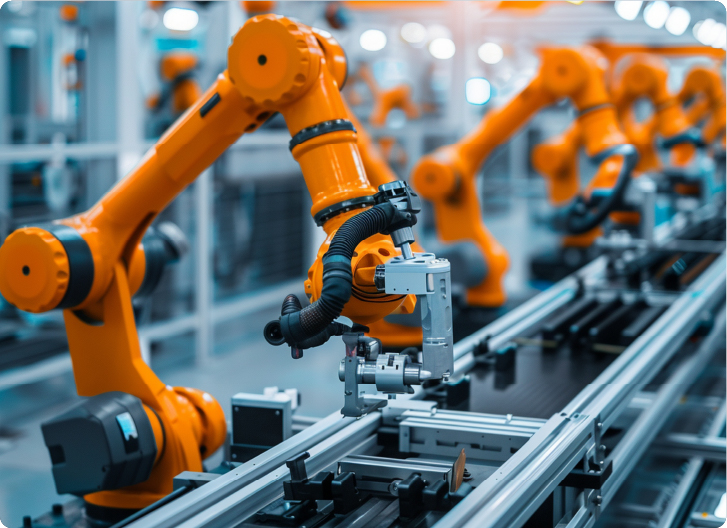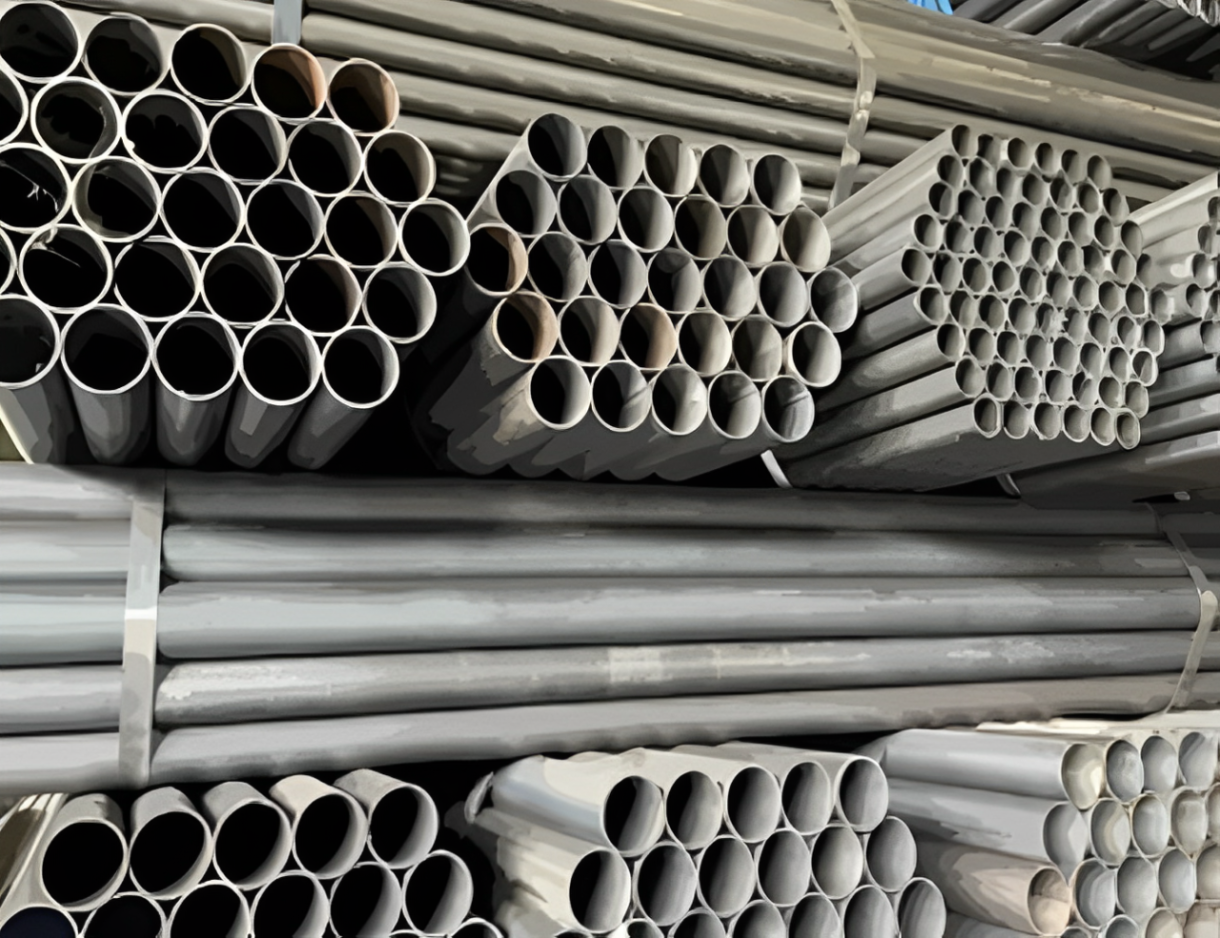
CNC machining relies heavily on materials that strike a balance between strength, machinability, and cost-effectiveness. As an option among others, iron and carbon steels are some of the most common options in the manufacturing industry. They are used as the basis for making car parts, as well as support and farm implements.
This in-depth guide provides details on the types, properties, and grades of iron and carbon steels used in CNC machining. Interesting tips that one can learn as an engineer, a machinist, or a procurement specialist are discussed here. So, we can provide you the informed material decisions.
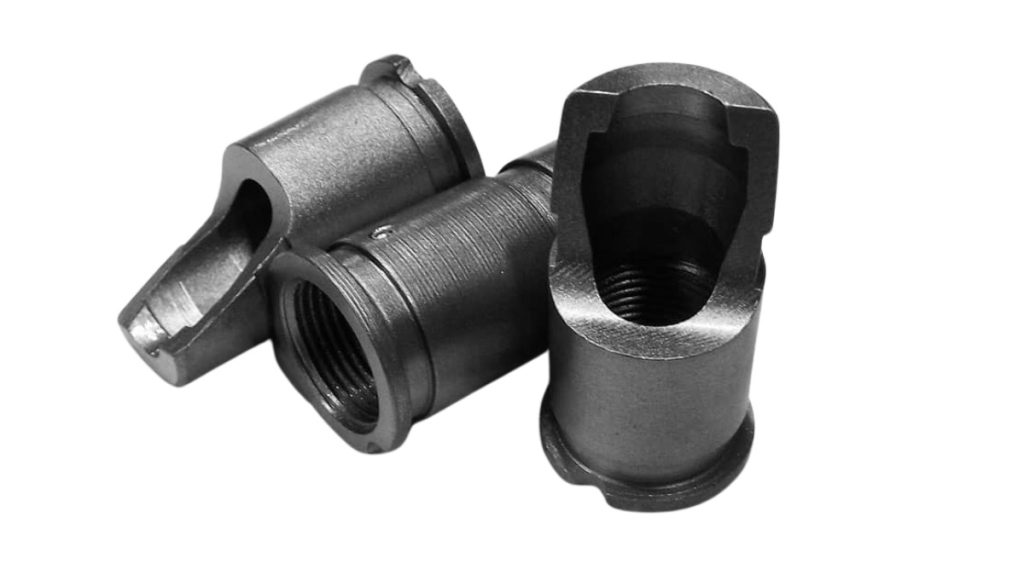
Metallic substances in which the major component of ferrous alloys is iron. Such alloys are carbon steel, alloy steel, stainless steel, and cast iron. These include carbon steels, which are the most frequently utilized and abundant due to their features. These features can be their noble strength, ductility, availability, and their costs. They are easily cast, cut, and welded and therefore extremely important in skyscrapers and bridges, engine blocks, and tools.
The carbon levels of steels define the nature of the material when subjected to various conditions, like when machined, welded, and heat-treated. Due to this flexibility, carbon steels are the base material in manufacturing and the CNC machining industry.
The most powerful alloying element of steel is carbon. Materials' mechanical properties depend on a change in carbon content that can be minor. But it affects the material characteristics.
The way carbon reacts with the crystal lattice of iron, engineering a hardening effect in solids known as solid-solution strengthening, and also with the appearance of microstructures such as pearlite, ferrite, and martensite during cooling and heat treatment.
In CNC machining, the carbon percentage is useful when choosing the appropriate tooling, cutting parameters, and post-processing such as quenching or tempering.
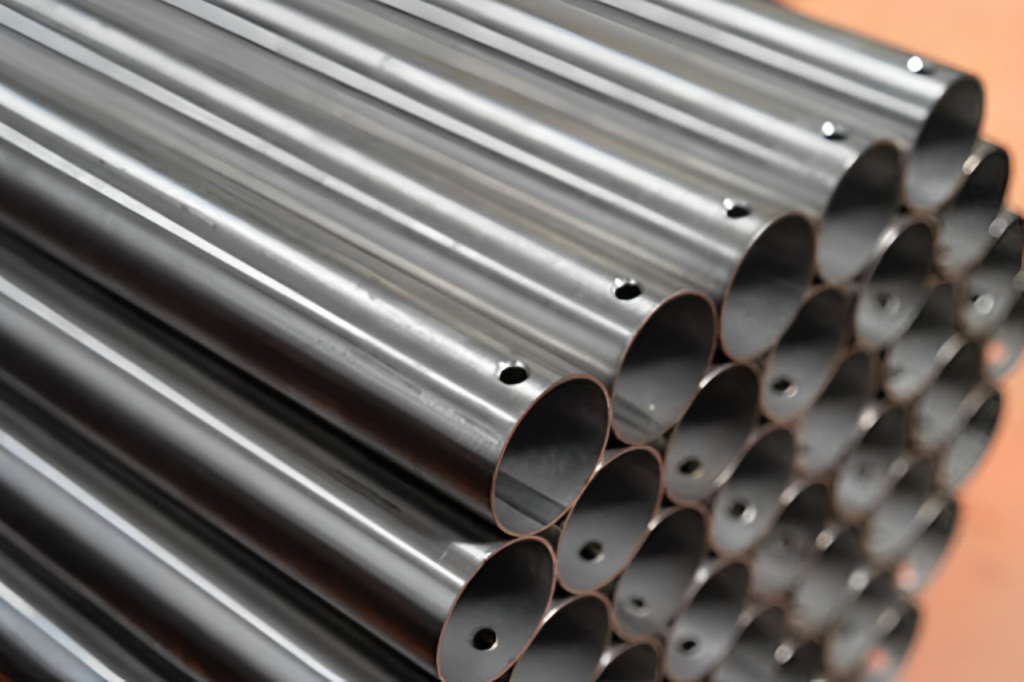
Here are the different types of iron and carbon steels we can use in CNC machining;
Plain carbon steels are mostly compounds of iron and carbon with a small percentage of manganese, sulfur, and phosphorus. Their carbon classification and price make them the most viable choice when it comes to general fabrication. They are the material of choice in CNC machining in parts that do not need much wear resistance or specific mechanical properties.
Examples: 1020, 1045
Alloy steels also add another element of alloying (chromium, molybdenum, vanadium, nickel) in order to improve the properties of carbon steel. These are added to enhance toughness, resist fatigue, resist corrosion, and harden.
Alloy steels may frequently demand carbide tooling, and also more exotic coolants when machined using CNC, owing to their elevated hardness and diminished machinability in contrast to plain carbon steels.
Examples: 4130 (chrome-moly), 4140, 4340
In free-machining steels, elements, such as sulfur, lead, selenium, or phosphorus, are added, specifically to enhance machinability. These inserts make shorter chips in machining, less wear on tools, and enable faster cutting speed, at least in automated machining or Large-volume CNC machining.
They cannot be used in structural applications owing to their lower mechanical properties, but they are also perfect in fittings, connectors, fasteners, and bushings.
Examples 1215, 12L14
Structural steels are crafted concentrating on strength in load-bearing, weldability, and formability, and not the hardness or wear resistance. They find application in buildings, in the framing of machinery, and in ordinary constructions. Structural steels tend to conform to such standards as ASTM A36 or EN S235.
The machine performs adequately in a majority of CNC applications but might not possess as fine machinability as that claimed by free-cutting grades.
Examples: A3 6, ST37-2, S235JR
Tool steels are hard, high-carbon steels that are specially designed to create tools, dies, and elements to sustain wear. They normally abound in tungsten, vanadium, and molybdenum, among others.
Such steels may be very hard to cut in the hardened state, but will commonly be CNC-machined in an annealed condition, followed by heat-treatment to the required hardness.
Examples: O1, D2, A2, H13
Another group of medium and high carbon steels is the spring steels, which have very good yield strength and fatigue resistance properties and are easily set back to their original shape after deformation.
They are cold-shaped and are usually heat-treated. In CNC machining of steels in springs, great concern must be paid to deflection of the tools and residual stresses.
Examples: 1075, 1095, 5160
The following table gives a brief overview of the carbon content in different steel alloys;
| Type of Steel | Carbon Content | Key Features | Common Uses |
| Ultra-Low Carbon Steel | ≤ 0.03% | Extremely ductile, corrosion-resistant, often interstitial-free | Automotive body panels, deep drawing applications |
| Low Carbon Steel | ≤ 0.25% | Soft, ductile, highly weldable, easy to machine | Structural components, pipes, and automotive frames |
| Medium Carbon Steel | 0.25% – 0.60% | Balanced strength and ductility can be heat-treated | Shafts, axles, crankshafts, train wheels |
| High Carbon Steel | 0.60% – 1.0% | Hard and strong, less weldable, prone to brittleness | Springs, blades, cutting tools |
| Ultra-High Carbon Steel | > 1.0% | Extremely hard, very brittle, not weldable | Knives, wear-resistant tools, punches, dies |
The prerequisites of using iron and carbon steels in the CNC machining process run in numerous grades, having different compositions and properties depending on the industrial applications. Some of the most commonly machined grades and their explanation in terms of characteristics, machinability, and applications are as follows.
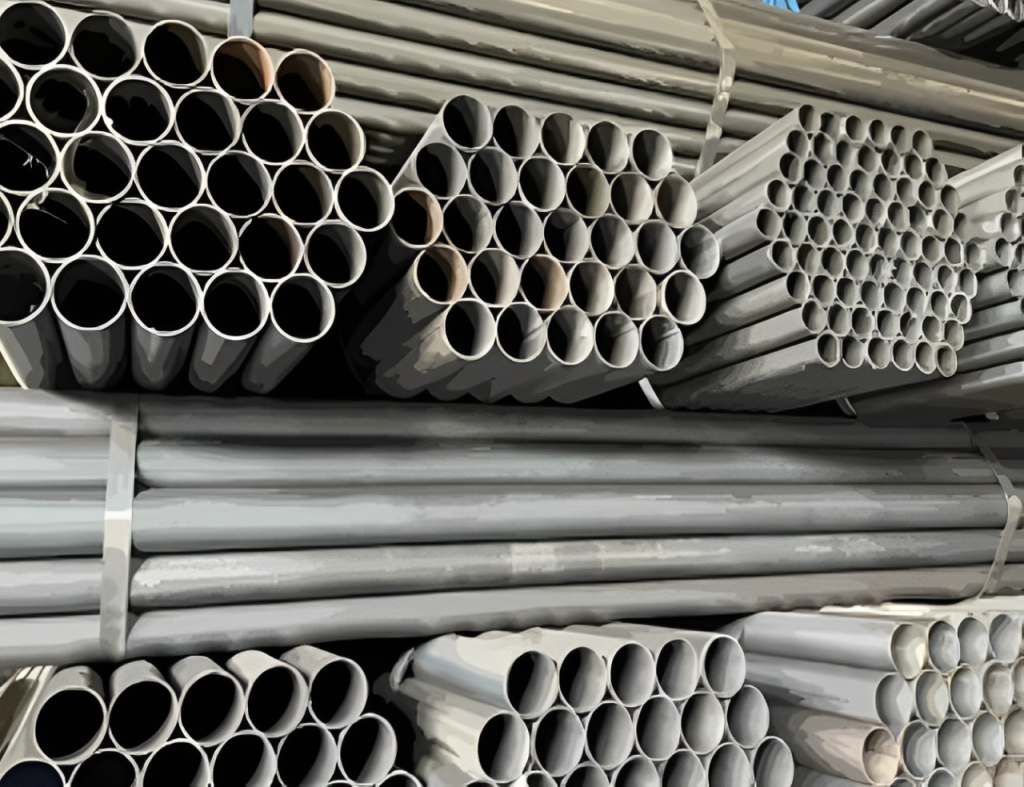
One of the low-carbon steels is the 1020 steel, which is highly weldable, formable, and has moderate strength. Being soft and easy to machine, it is used in components that do not require much strength or hardness (carbon content approximates 0.20 %). It is good for turning operations as well as milling processes, and it can be carburized to provide surface hardness. Typical uses are: shafts, axles, spindles, and general-purpose machine components.
1025 steel has good machinability, good weldability, and a small increase in tensile strength, being close to sitting above 1020 in carbon content. It finds application where improved mechanical performance is desired but is not so critical that forming and cutting capabilities are affected. This balance of strength and machinability is found in such components as light gears, linkages, and forged automotive components.
1045 is a general-purpose medium carbon steel containing about 0.45 percent carbon, which has an excellent tensile strength, good hardness, and resistance to impact. It is quite suitable for CNC work that needs surface strength and wear resistance, and with heat treatment. It is more difficult to cut when compared to low-carbon steels, but drills and turns without difficulty, provided adequate tooling is used. It can be commonly found in bolts, connecting rods, and crankshafts.
Steel 1215 is specially designed for high-speed machining, to which sulfur is added in order to enhance chip formation and minimize the wear of the tool. It cannot be welded because it contains sulfur, but it works perfectly on CNC lathes during the process of mass production. It creates a fine surface finish under small tool pressure, hence excellent for precision machining components like bushings, hydraulic fittings, couplings, and fasteners.
A36 and its equivalents: Constructions and general fabricating structural carbon steels. They are of moderate strength and have superior weldability; thus, they find application in large and welded assemblies. Between free-cutting steels and most headed steels, they are not easily machined, but they are good enough under the CNC machining operations, such as milling and drilling, with the provision of proper feed rates and the tooling. It is used as support frames, brackets, and base plates, among other applications, in load-bearing structures.
4130 is a low-alloy steel, which is manufactured with chromium and molybdenum, and its strength-to-weight ratio and fatigue resistance are high. It is easily machined in the normalized form and is easily heat-treated. In aerospace components, roll cages, bicycle frames, and high-stress machinery components, it is particularly favoured because of its toughness and weldability. 4130 CNC machining needs sharp tools and steadiness in the cutting velocity to avoid work hardening.
4140 steel is a high wear resistance and overall tough steel, which makes it one of the most popular alloy steels in CNC machining. It is comprised of chromium and molybdenum, which give it resistance even in cases of extreme load. It becomes very hard, after heat treatment, with good machinability on carbide tooling. It can commonly be found in heavy-use gears, shafts, dies, and tooling parts where precision and strength are both needed.
| Grade | Carbon (%) | Yield Strength (MPa) | Tensile Strength (MPa) | Hardness (HB) | Machinability (%) | Heat Treatment |
| 1020 | 0.20 | 350–410 | 410–480 | ~126 | 65% | Yes |
| 1045 | 0.45 | 570–650 | 600–750 | ~170–230 | 60% | Yes |
| 1215 | 0.09 | 325–400 | 415–450 | ~150 | 100% | No |
| 4140 | 0.40 | 655–830 | 850–1000 | ~250–300 | 55% | Yes |
So, let’s discuss this in detail;
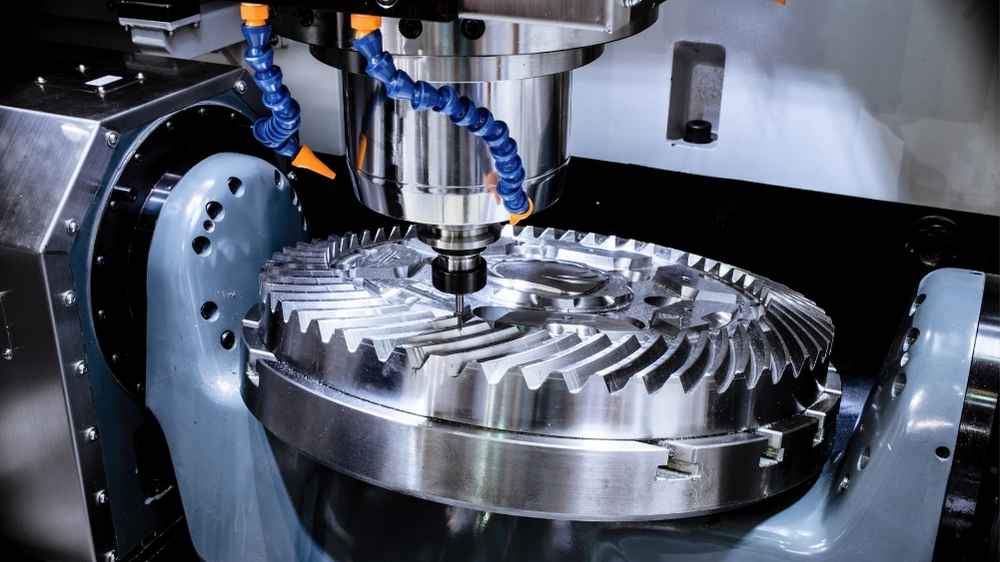
Low carbon steels are good to machine, but they produce long and stringy chips. Medium and high carbon steels are harder to cut, and some are equipped with better finishes.
Alloyed steels such as 4140 require better control of speeds and feeds. Chatter or lack of dimension accuracy can be a result of poor tooling.
Free-cutting steels chip to a manageable size, which enhances efficiency. Higher carbon steel may have a smooth finish provided that they are machined accordingly.
Misplaced chip control may spoil the part and block the tools. Consistency requires chip breakers and optimal cutting angles.
The steels, such as 4140/4340, are hard steels that need carbide or coated tools. Free-machining steels lower wear and make tool life longer and operations quicker.
Tool degradation in harder steels is accelerated by high cutting temperatures. Frequent observation of the tools and applying coolants enhances the life of the tools.
Sulfur will help break chips, and it also helps lead finish better, but lead usage is diminished because of environmental issues. These are machining-enhancing additives.
They can, however, slightly decrease the ductility and hardness. The grades with free-cutting characteristics are most applicable in the high-speed, low-load parts.
Heat treatment is a very vital consideration in the manipulation of the mechanical properties of iron as well as carbon steels. It has the potential to cause big changes in machinability, toughness, hardness, and wear-resistance; thus, a clear knowledge of the various processes and their effects on particular grades of steel is crucial when handling CNC operations.
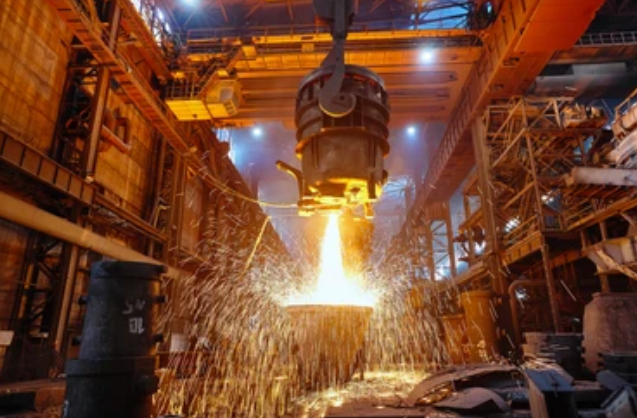
Where carbon is low, such as with low carbon steels (e.g., 1020), case hardening (i.e., carburizing, nitriding) can also be employed, where the surface is hardened only and wear is resisted, and the core can remain ductile. It is perfect to be used in parts such as camshafts or pins.
It can be used with medium carbon (e.g., 1045) and high carbon (e.g., 4140) steels, which are both capable of being hardened to a uniform depth to produce high strength and wear resistance. This applies to components that are regularly stressed and loaded.
In most CNC manufacturing, heat treatment is applied after rough machining to prevent tool wear due to a hardened surface.
Finishing passes and close-tolerance operations are done after heat treatment to guarantee that there is dimensional accuracy and aim at attaining surface integrity. Machining after heat treatment may involve the use of carbide machining tools and lower operating speeds because the material is now harder.
The carbon and alloy steels have big differences in terms of weldability. It is fundamental to learn more about the differences, as this can be the primer in planning the welding procedures and the post-weld CNC machining procedures.
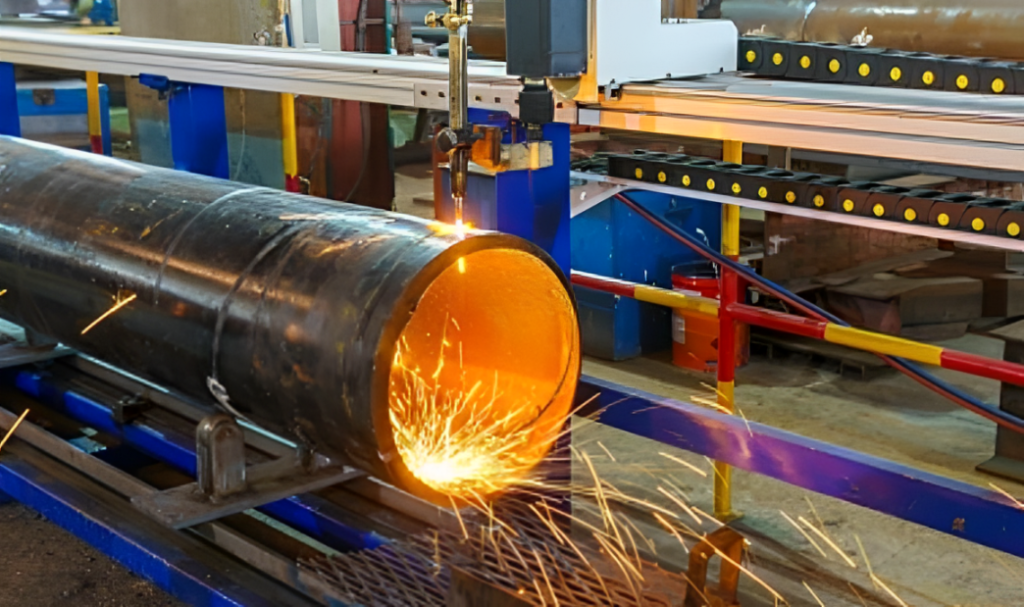
Other steels, such as 1020 and A36, are very weldable with little chance of cracking and distortion. They can easily be fused, since they have low carbon content, and this does not require special precautions.
These grades are well suited to welded parts such as frames and supports, and then they may be CNC finished with holes for brackets or mounting surfaces.
These include alloy steels, which are quite strong but sensitive to heat when being welded, like the 4140 and 4340. To counter this, they demand that they be preheated to an acceptable temperature before any welding takes place. Preheating enables the temperature gradient to be minimized and prevents thermal shock and cracking. Another point is that matching filler metals that complement the base material to achieve a strong, durable weld should be used, too. The process of heat treatment usually takes place after welding is carried out in order to normalize the structure, as well as to recover toughness.
Final scope of work. After welding, the work may have to be machined to remove distortion or return the parts to tight tolerances. To make post-weld machining best, the part should be cooled down and normalized. Any irregularities due to either the weld beads or warp can be taken off by any finishing processes, such as surface grinding, facing, or boring. Where accuracy is important, it is also usual to machine before welding a weld-prepped joint, and then machine after to obtain an accurate surface.
The choice of the most suitable grade of steel to be machined by CNC depends on a compromise between mechanical aspects, machinability, price, and service conditions.
In structural or low-stress uses in general, the strength is good enough and cost-effective with grades such as A36 and 1045.
When a component will be subjected to high stress, impact effects, or is prone to fatigue, then 4140 and 4340 are better choices since they can be heat-treated with high tensile strength and toughness.
Steels that are low in carbon, like 1020 and A36, are some of the cheapest and readily accessible materials that can be used in CNC machining, and thus most industries use them as a default option.
The high alloy steels, such as 4340, are more costly but satisfy the circumstances that demand high performance.
Here are some pros and cons of iron and carbon steel grades;
| Pros | Cons |
| Wide range of grades | Susceptible to rust |
| Excellent strength and durability | Tougher grades are harder to machine |
| Cost-effective and recyclable | Requires coatings for corrosion areas |
| Easy to heat treat for performance | Can warp during welding or hardening |
| Readily available globally | The weight is higher than that of aluminum |
So, must follow these tips;
Iron and carbon steels play a foundational role in CNC machining, offering an excellent balance of strength, machinability, and cost-effectiveness. From easy-to-machine mild steels to tougher alloy steels used in automotive and construction, these materials support a wide range of applications. Their compatibility with turning, milling, and drilling—along with high weldability and the ability to tailor hardness through heat treatment—makes them suitable for both precision components and heavy-duty parts. At ApexRapid, we provide expert CNC machining services for a variety of carbon and alloy steel grades, helping clients optimize performance and production reliability by selecting the right material based on carbon content, hardness, and chip control.
Q1: What is the best steel classification to use with high precision CNC turning?
A: 1215 steel is very machineable and is ideal for high precision turning.
Q2: Do you weld 4140 steel?
A: Yes, but it has to be preheated and post-weld heat-treated to avoid cracking.
Q3: What is the most economical carbon steel to use in structural applications?
A: A36 or S235JR are cheap and are widely used in the fabrication of structures.
Q4: What is the impact of heat treatment on CNC machining?
A: It enhances wear resistance and hardness, and it can raise tool wear and lower machinability.
Q5: Which steel grade is suitable for gears and shafts?
A: 1045 or 4340 by strength and wear resistance requirement.
